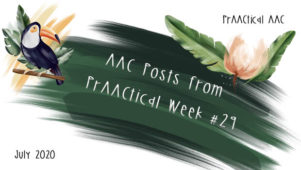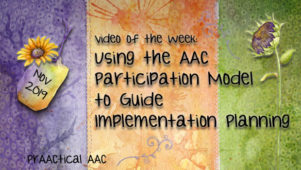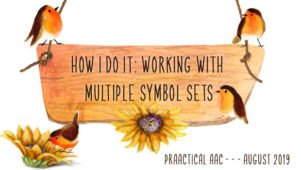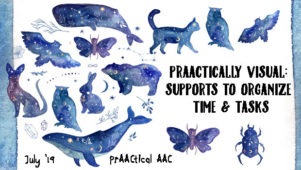Learning about AAC Strategies in the Community….
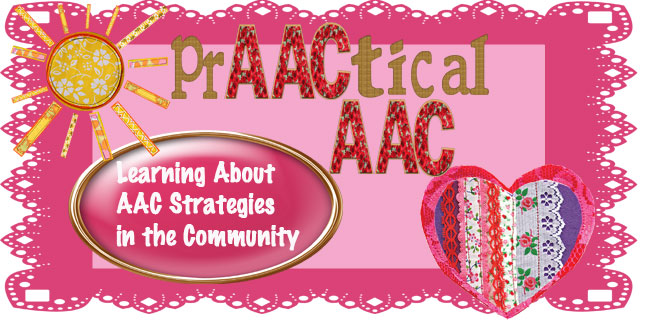
How we integrated AAC strategies into a community event…
The name of our website is PrAACtical AAC. We continue to look for ways to make AAC strategies fit praAACtically into ALL activities.
We are extremely proud to be part of the Dan Marino Foundation WalkAbout Autism, which is a large South Florida Community Event. The Walkabout helps raise money services for individuals with autism and other developmental disabilities and their families. It also promotes a sense of community collaboration and awareness about autism spectrum disorder and developmental disabilities. We are including this information about the WalkAbout not as a plea for money (although read about the WalkAbout and donate if you are so inclined), but instead to tell you how we are incorporating AAC into community events.
This past weekend was the 2nd WalkAbout Autism. It was a truly amazing event and day! There was great music and bounce houses, video games, singers, dancers, art activities, food, and much more. There were many community people involved in the WalkAbout that were AAC knowledgeable and many that were not. The WalkAbout planning committee realized early on that in addition to raising funds (which are greatly needed) there was also an opportunity to add some best practice intervention strategies to the event and add some education to the whole community. By providing best practice intervention strategies, it was felt that ALL would have an opportunity to participate optimally and inclusively in the Dan Marino Foundation WalkAbout Autism.
We put all AAC supports and instructions on the Dan Marino WalkAbout Autism website so everyone had easy access to them. Our implementation ideas:
- The PlayBook– Since the WalkAbout is fairly new and does not occur often (unfamiliar), the WalkAbout committee developed a modified social story or as we call it a personal participation story. Families could print it out and everyone could learn what to expect the day of the event. Not only did the WalkAbout participants LEARN about social stories, so did the designing team, the printer, the vendors, etc.
- The Day Planner– We were not able to use a regular event schedule because there was no specific schedule to the day, and new activities were added up to the last day. It was felt though some participants might need a plan to follow in order to understand some time frame of what they were going to do and how many activities or length of the day. A day planner was developed where families could look around the Sun Life Stadium (YES, we got to go ON the Miami Dolphins field!!!) and have a way to list what they wanted to do. So, now ALL the WalkAbout Autism participants had the chance to LEARN about schedules and modified schedules.
- The Chill Zones- Since the WalkAbout has many participants (more than 10,000 last year & 17,000 this year), the committee voted to have an area that would be quieter and less crowded and cooler than the outside with possible heat, noise, and overstimulation. So now ALL participants have a place to go to if they needed a break. We think of this as a Break Pass or Free Pass. We were able to have 2 this year compared to 1 last year. We LEARNED that in this case, 2 is better than 1. The Chill Zone had instructions that were picture symbol represented. More LEARNING: about ‘Break’ Options and Free Passes.
- The Star Spangled Banner– A group of singers with autism spectrum disorders were going to help start off the walk with the singing of the Star Spangled Banner. Three of the singers used a spoken singing voice and one of the singers used an AAC spoken voice. The song was illustrated in pictures to provide a visual representation of the song meaning and used as AAC symbols. The Song Story was loaded onto the iPad so the AAC user could be active in singing words for the National Anthem. Each page of the story was a singing line from the song. All participants could print out the Star Spangled Banner Visual Story. Even more LEARNING: about Active Participation for ALL.
- Relax Pass– A trial- We tried to keep lines for activities short and had some walking entertainment however, with all the stimulation at the stadium, it was felt there was the potential for difficulty waiting in line. We offered on-line strategies for helping with waiting, but if that were not enough, trained volunteers would offer a Relax Pass to a family (like a ‘Fast Pass’ from Disney World – we are from Florida after all). A relax pass is a written pass that allowed a family to get out of line and come back at a designated time and then they would not have to wait. Since the event just finished I will have to check to see if this idea worked. There was some initial concern over the prAACticality of this idea. The good news is that I did not hear of any problems. We are still LEARNING….
Incorporating these AAC strategies was only possible because of the support of many, many, many, people. The great news is that we got that support and that means many, many, many people LEARNED about AAC strategies.
Filed under: PrAACtical Thinking
Tagged With: autism spectrum disorder, community, dan marino foundation, implementation ideas, Learning, personal participation, song, south florida community, WalkAbout
This post was written by Robin Parker



